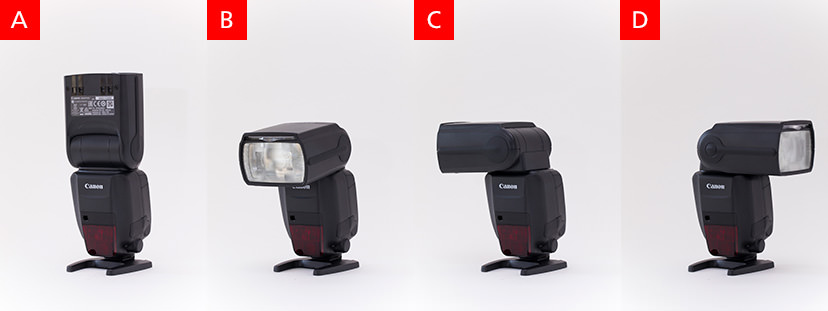Taking pictures with a professional Speedlite flash can sometimes seem overwhelming, but it also opens up a whole new world of possibilities to take truly epic photos that simply wouldn’t be possible in natural light.
Professional speedlite flash seems to be a very good idea for those who are just getting started and want to have more control over the lighting of their shooting environments, but in addition to the necessary lighting knowledge and basic camera settings, it is important to have some technique when shooting with a professional Speedlite flash.
- When shooting with a professional Speedlite flash on the DSLR camera.
- You get a lot of extra light that isn’t always really necessary.
- Because flashes when placed on the automatic don’t take into account the amount of light and variations that can occur around the subject.
- And triggers an amount that affects not only him.
- But all elements of the image.
NEVER use a professional flash directly on your subject, as explained, the amount of light that will be emitted will not always be really necessary in the final result, knowing that the subject is never alone in an image. be a good solution.
Professional Speedlite flashes help direct light more smoothly and with greater dispersion to what is being photographed, so it is possible to obtain well-lit images with natural results. -Release in other shades, to create new effects.
Using colored walls and surfaces in the absence of these accessories can be a good escape, think about keeping your subject close to the source that will bounce the flash light and vice versa.
Placing the flash upside down can also produce good results. When we use the flash on the side, we usually balance it with another light bulb or fill a space little illuminated by compensation, because when we use it in the back position, we fill the entire subject or a larger amount than the side.
And how is that different? The diffusion of light as a whole can contribute to greater harmony between the background of the photo and the main subject and provide better lighting conditions and a better balance with direct light, whether from the sun or professional lighting equipment. Flash upside down when there are white and smooth fleece, walls and ceilings for complete and even dispersion. This also prevents the flash from flashing white dots in sunny areas.
When you place your professional speedlite flash up, there is a large scatter of light from your shot and a greater loss of power, that is, in places where there is no support to bounce the lighting, such as ceilings or canvases, the light weakens However, this can be positive in photography, since it reduces soft shadows and gives more contour to the face , for example, in enclosed environments or with the use of the above-mentioned batsmen, the effect is similar to the position of the professional speedlite. flash reversed backwards, however much more concentrated and much more powerful.
As much as the light that reaches the subject is less, in enclosed places, the affected field receives a greater amount of lighting, this is common at weddings, parties, parties and events where the photographer uses the flash upwards to photograph in specific places. In addition to the firmer effect of shocking light, aiming upwards can help illuminate the entire environment, as the lost light will easily disperse there.
In short, the position of your flash can change a lot or little the final result of your professional photography, but it all depends on the combination of your equipment, such as the DSLR lens, or the settings of your camera.
Having a flash won’t make your photos glow automatically. It is necessary to have a good lighting technique and a good knowledge, the professional speedlite flash is not always really necessary and then you can use all your creativity with the lighting provided by the place itself.

